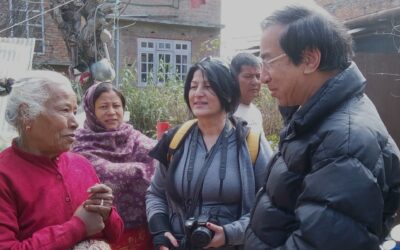Mitra Path and Shaping Young Minds Foundation traveled by jeep to the remote hills of Dhading district to assess the conditions of the schools there.


A Partnership
Edyta Rusek is a successful and retired entrepreneur who fell in love with the children of Nepal. Originally from Poland and a long-time Los Angeles resident, Edyta traveled all over the globe, but when she went to Nepal, she “just knew” this is where she wanted to make a difference. Since that first trip, she not only experienced Nepal’s 2015 earthquake firsthand, but she has worked tirelessly to set up a foundation with the mission to give underprivileged Nepali children a better chance in life through a good education. Edyta has focused her initial efforts on supporting Dalit children that live in the Dhading district. Dhading tends to receive less attention and resources than regions like Kathmandu or Chitwan because of its physical isolation and lack of industry. And the Dalits are the lowest caste in Nepali society, and often live in extreme poverty and face discrimination. Edyta has since sponsored several Dalit children from six different schools in Dhading.
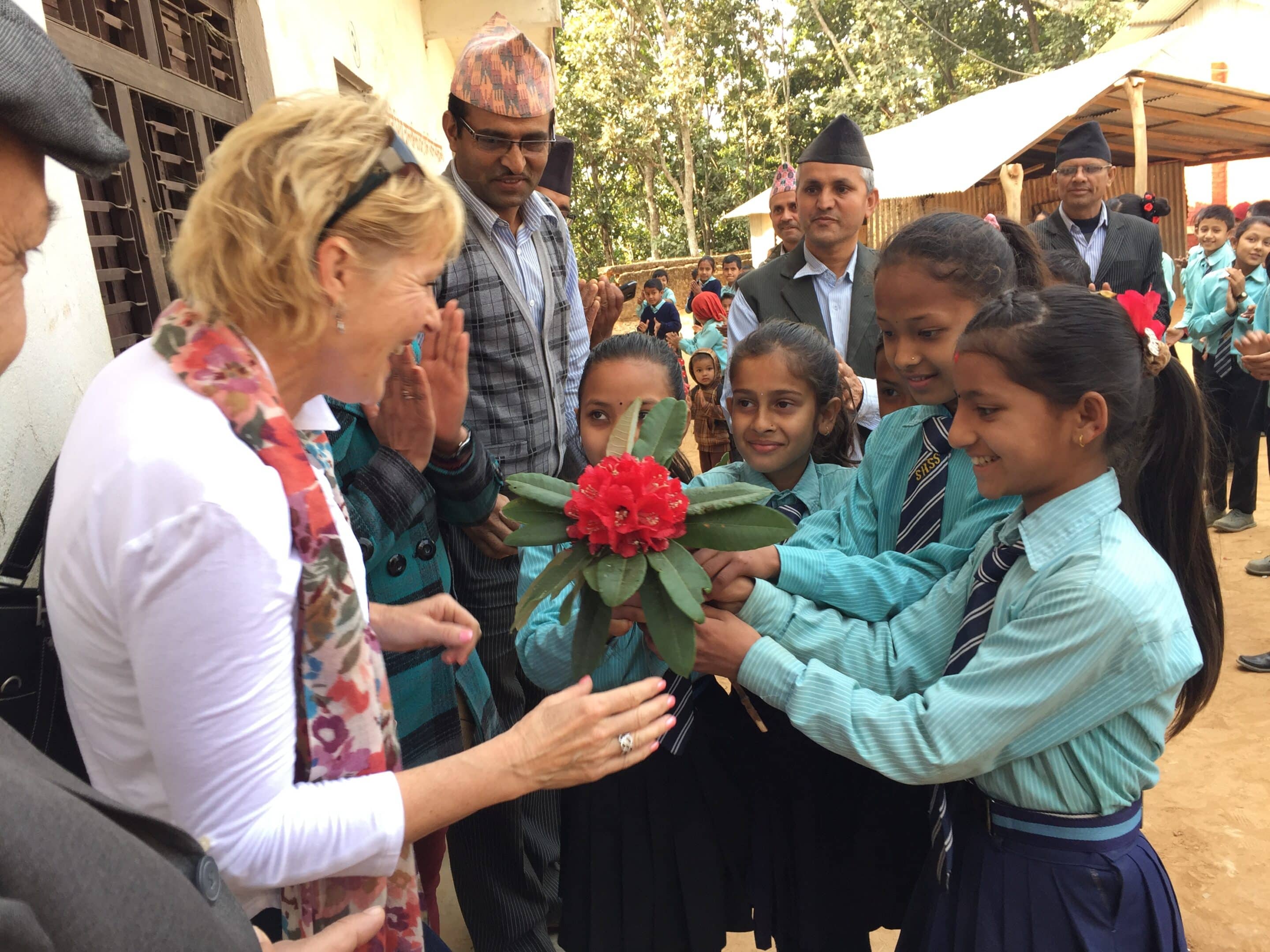
Mitra Path accompanied Edyta’s Shaping Young Minds (SYM) team to Dhading for a 3-day trip to visit the schools. The goal for the trip was get a better understanding of the conditions of the schools, and determine how we could partner to improve those communities through education and livelihoods.
The Road to Dhading
It was dawn of our first day in Nepal and we rose to sounds of Kathmandu – a cacophony of dogs, roosters, pigeons, bells, foot traffic and honking cars. We met Edyta and her staff at their hotel, mounted our luggage onto the top of the Jeep, packed eight of ourselves in, and off we went. Through traffic, and then narrow roads, then boulder-embedded dusty paths with staggering cliffs on the either side. We jolted along in the jeep for eight hours, our bodies heaving in every direction, our necks whipping from side to side. As we got closer to Dhading, the minerals in the earth gave the soil a red hue, making fallen trunks on the side of the road look like giant carrots dusted with cinnamon. Plumes of dust swallowed us whole and billowed under our feet like chalk when we stepped out of the car.

We arrived at the hotel in the evening exhausted, but stayed up late into the night putting together gift sets for the kids – stickers, pencils, erasers, snacks, t-shirts, beanies, socks – much of which Edyta had brought in large suitcases. Mitra Path contributed bright colored pencil pouches and stickers for all the children.
Our effort was well worth it the next day when we arrived at the first school and were greeted by hundreds of children. They put on a welcome ceremony for us, including singing, drumming and traditional dancing. They hung piles of flower garlands around our necks and pressed red powder on our foreheads. We handed out the gifts and the children curiously peeked inside their pouches and packs of goodies, smiling. We ended the visit with a tour of the school, a meeting with the faculty, and a delicious Nepali lunch in a home nearby.

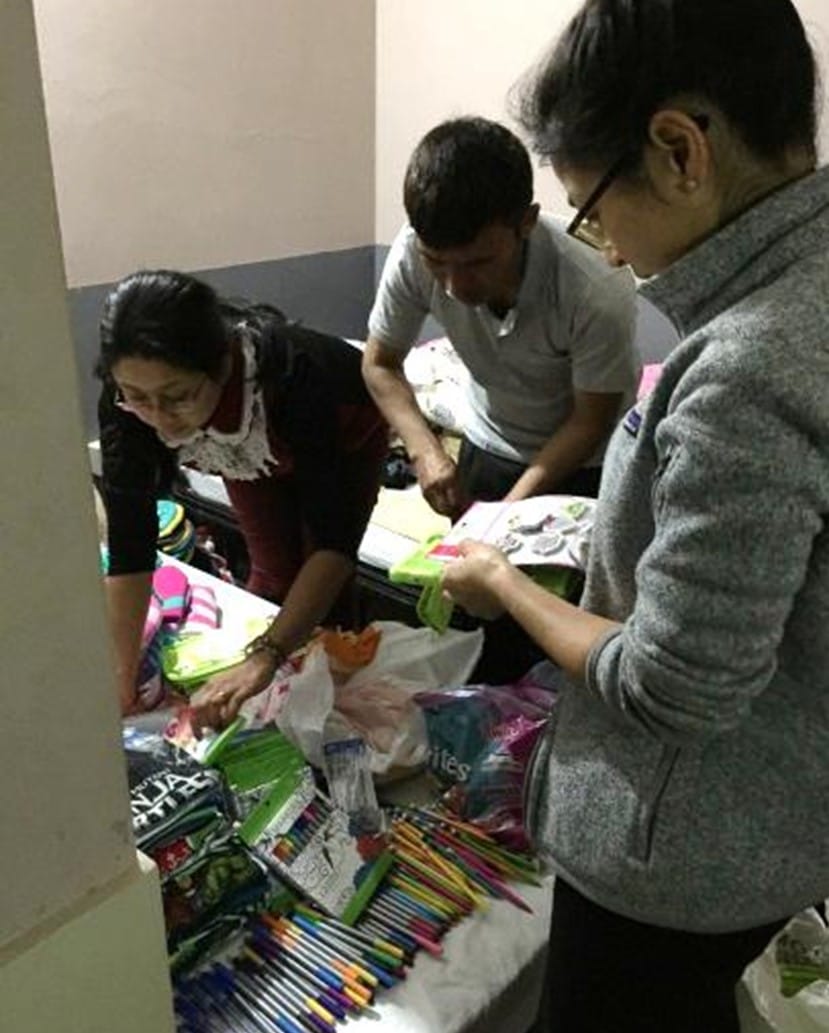



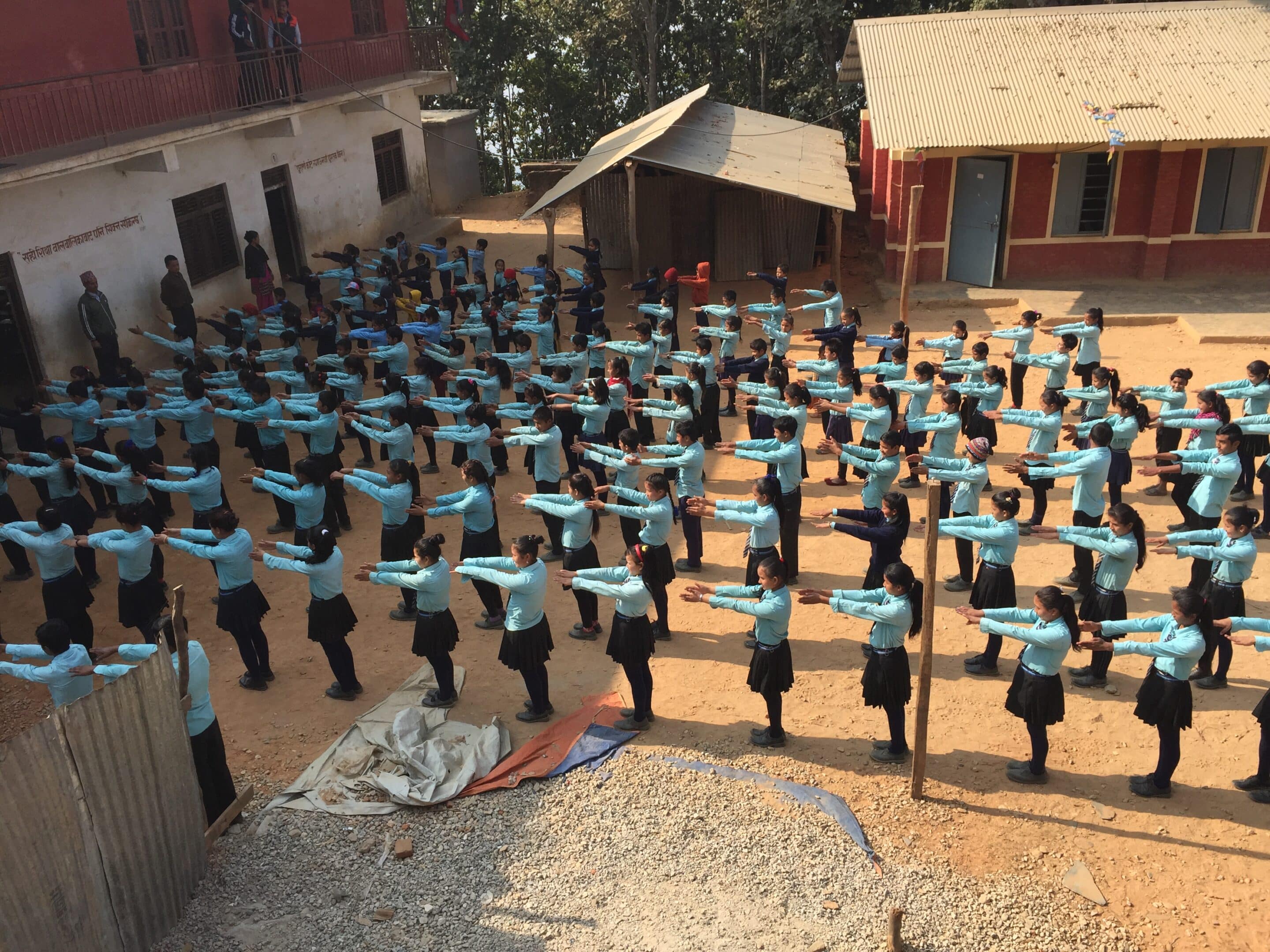

Our jeep could not make it up a steep hill to the second school, so we got off and started walking. We were surprised to find ourselves in a hidden paradise — lush plants, chirping birds, baby goats, a pristine breeze, homes nestled under the shade of canopy trees, terraced green hills, and women in bright red clothing carrying baskets.




This village led to a primary school that stood on a flattened field overlooking a vista of cascading mountains. The view was breathtaking, but the school was almost nonexistent, destroyed by the earthquake and never rebuilt. Children were studying in small temporary shelters with corrugated tin roofs. On a sunny day like ours, it was a cheerful scene. But we could see that when the rain comes, water would drip right down through the roof and onto the children and their books. It was clear that there were many ways in which it would almost be impossible for the children at these schools to succeed in today’s society.






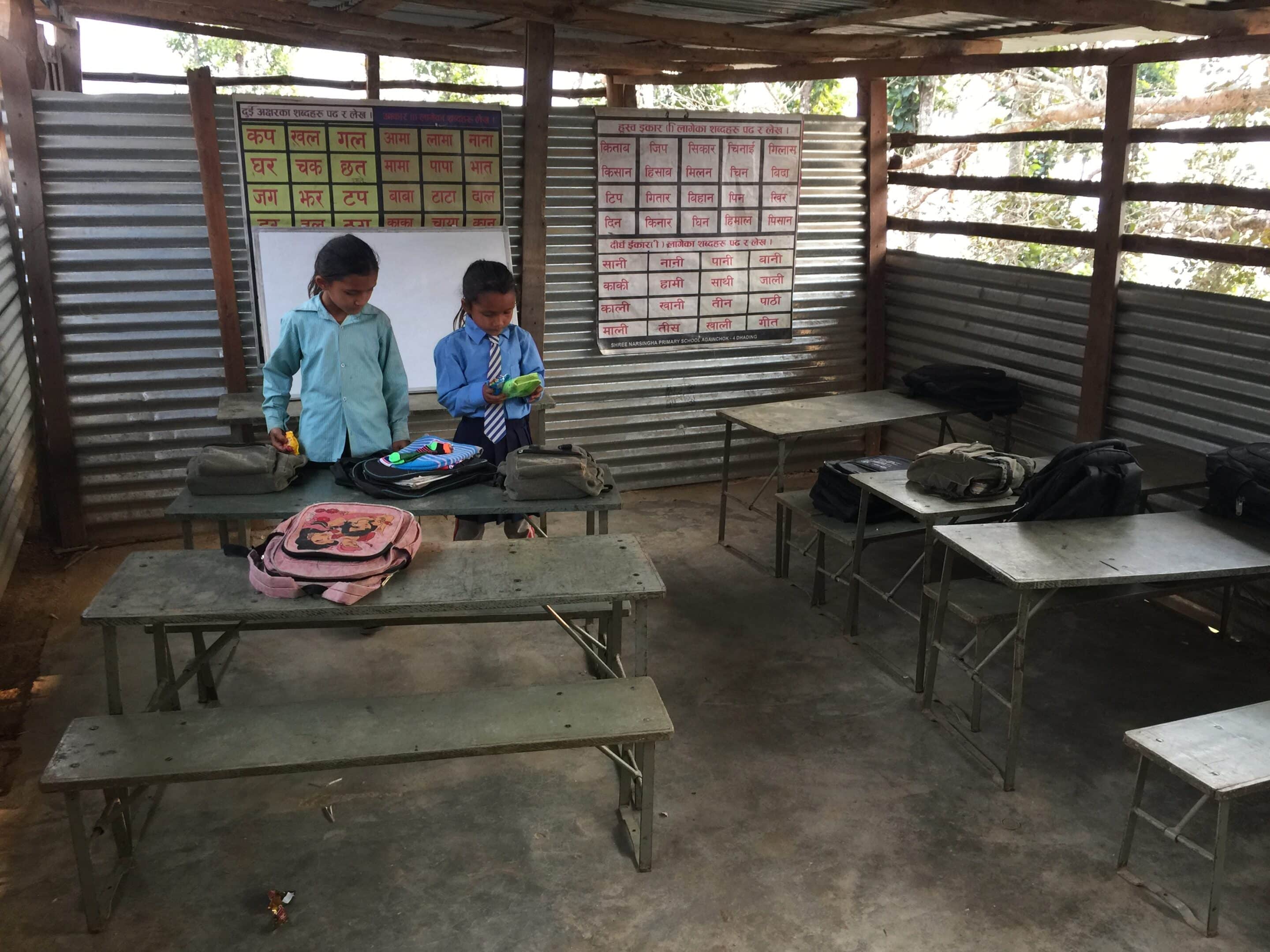

How We Can Help
Based on the tours, Mitra Path is interested in partnering with SYM to support the schools in two ways. The first is to build e-libraries, where the children would have a classroom, laptops, internet access and a curriculum to learn coding and other computer skills. This would open up countless ways of connecting the children to resources in the outside world. For the curriculum, Mitra Path and SYM are considering partnering with a third party such as Code for Nepal, which has been successfully empowering women and minority groups in Nepal with digital education, scholarships and internships.
The second would be to provide vocational equipment and training to the parents of the children. In our meetings at the schools, we found out that many of the parents are blacksmiths, tailors and farmers. By providing blacksmiths with better equipment and methods, for example, they could increase their productivity and provide for their children. Tailors could improve their business with a better sewing machine. SYM’s local partner, the Dalit Welfare Organization, has assisted in speaking with the parents to find out what specific equipment would help their livelihoods.
We believe that these two forms of support will best leverage Mitra Path’s resources and support our mission to meet their needs.






Moving Forward
With the laughter of the students still echoing in our ears, we descended the hills of Dhading back to Kathmandu. A powerful river curved through the terrain below us, its teal glacial currents flowing down from the Himalayas, frothing over gray boulders. The setting sun cast a pink glow across the water, mirroring the sky. The clouds smeared gold into an endless cotton candy sky, all the colors deepening into a gradient of indigo that led to the first flicker of stars. Humbled by our time in Dhading, we left inspired and determined to do what we can to make a difference…one step at a time.

Photo credit: Shaping Young Minds Foundation

